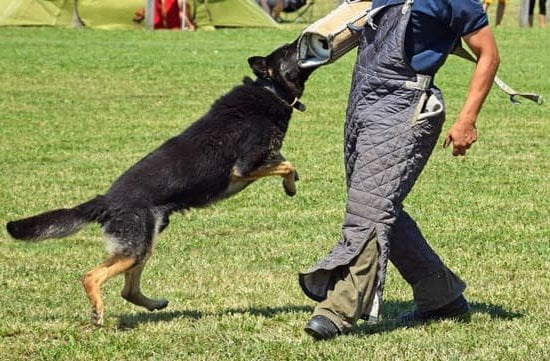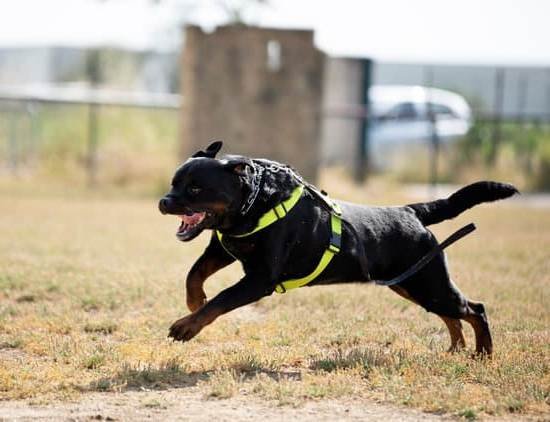Can you send your dog to police training? Many people are curious about the possibility of turning their beloved pets into law enforcement companions. Understanding the role of police dogs is crucial in determining whether this path is suitable for your furry friend. From apprehending suspects to detecting narcotics and explosives, police dogs play a vital role in maintaining public safety.
The qualities of a successful police dog go beyond obedience and agility. These canines must possess exceptional scent detection abilities, intelligence, and the courage to face potentially dangerous situations. The process of training a police dog is rigorous and requires specific skills that not all dogs may possess, making it important to carefully consider the eligibility requirements before pursuing this option for your pet.
Before making a decision to send your dog to police training, it’s essential to understand the requirements and eligibility criteria involved. Additionally, weighing the pros and cons of sending your dog to this specialized training program is crucial in determining if this is the right path for both you and your pet.
Alternatively, there are different avenues available for those who wish their dogs to be involved in law enforcement or protection work without pursuing full-fledged police training. And finally, understanding the cost implications of sending your dog to police training will also play a significant role in making an informed decision about your pet’s future career in law enforcement.
The Qualities of a Successful Police Dog
Strong Scent Detection
One of the most important characteristics of a successful police dog is its ability to detect scents. Dogs have an incredibly strong sense of smell, and they can be trained to identify specific odors, making them invaluable for tasks such as finding drugs or explosives.
Agility and Physical Fitness
Police dogs need to have the physical ability to handle the demands of their job. They must be agile, quick, and physically fit to navigate various terrains and obstacles while keeping up with their human counterparts during police operations.
Intelligence and Trainability
Successful police dogs are highly intelligent and trainable. They need to be able to learn and retain complex commands quickly in order to perform their duties effectively on the job.
In addition to these qualities, successful police dogs also exhibit traits such as loyalty, courage, and good behavior around people and other animals. These characteristics combined make for a reliable and efficient working partner for law enforcement officers.
The Process of Training a Police Dog
Training a police dog is a meticulous and comprehensive process. It starts with selecting the right breed with the appropriate qualities to become successful in law enforcement. Once the dog is chosen, it undergoes basic obedience training before advancing to specialized training that includes scent detection, apprehension work, and tracking. The handlers play a crucial role in the training, as they form a strong bond and partnership with their dogs throughout the process.
Police dogs are trained to be versatile and adaptable to various environments and situations. They must be able to remain focused and obedient even in chaotic or high-stress scenarios. Additionally, they are conditioned to work alongside their handlers as part of a cohesive unit, responding swiftly to commands while also having the ability to assess situations independently when necessary.
Throughout their training, police dogs are exposed to real-life scenarios such as building searches, crowd control operations, and narcotics detection training. This hands-on approach allows them to acclimate to different settings and develop the skills needed for their duties in law enforcement. Moreover, ongoing training is essential for these dogs since it helps maintain their proficiency and reinforces their capabilities for actual fieldwork.
| Training Process | Description |
|---|---|
| Breed Selection | Choosing a breed with suitable qualities for law enforcement work. |
| Basic Obedience Training | Teaching fundamental commands like sit, stay, and come. |
| Specialized Training | Focusing on scent detection, tracking, apprehension work. |
| Real-Life Scenario Training | Exposing dogs to different environments and situations related to law enforcement tasks. |
Can You Send Your Dog to Police Training
Sending your dog to police training is a big decision, and not all dogs are cut out for it. There are certain requirements and eligibility criteria that your dog must meet in order to be considered for police training.
One of the main requirements is the age of the dog. Most police departments prefer to start training with a dog that is between 1 and 2 years old, as they need to have reached a certain level of maturity before starting the rigorous training process.
In addition to age, your dog will also need to pass certain temperament tests in order to be eligible for police training. Police dogs need to have a strong sense of loyalty, be able to work well under pressure, and have a calm demeanor even in stressful situations.
They also need to be sociable and able to interact with other people and animals without becoming aggressive. If your dog displays these qualities and has a high level of obedience, they may be eligible for police training.
It’s important to note that not all breeds are suitable for police training. While German Shepherds and Belgian Malinois are some of the most common breeds used as police dogs, other breeds such as Labrador Retrievers and Dutch Shepherds can also be successful in this role. However, smaller or less physically imposing breeds may not be considered suitable for police work due to their size and physical capabilities.
| Requirement | Eligibility Criteria |
|---|---|
| Age | Between 1-2 years old |
| Temperament | Loyalty, ability to work under pressure, calm demeanor, sociability |
| Breed | German Shepherds, Belgian Malinois, Labrador Retrievers, Dutch Shepherds (and others) |
Pros and Cons of Sending Your Dog to Police Training
Pros
Sending your dog to police training can provide them with a meaningful and fulfilling career in law enforcement. As a police dog, they will have the opportunity to serve and protect their community alongside their human handlers. The rigorous training program can also help them develop important skills such as obedience, agility, and scent detection, which can be beneficial for their overall well-being.
In addition, becoming a police dog can provide your pet with a sense of purpose and fulfillment. Many working dogs thrive on having a job to do, and the structured environment of police training can offer them the mental stimulation and physical activity they need to stay happy and healthy. Furthermore, some owners find it rewarding to see their beloved pet make a positive impact in society through their work as a police dog.
Cons
On the other hand, sending your dog to police training is not without its drawbacks. The rigorous nature of the training program can be physically and emotionally demanding for your pet. It may also involve exposure to potentially dangerous situations or environments, which could pose risks to their well-being.
Moreover, not all dogs are suitable for the high-pressure demands of police work. Some pets may struggle with the intense training program or may not possess the necessary qualities required for success as a police dog. Finally, there may also be concerns about the potential impact on your relationship with your pet if they become more bonded with their human handlers than with you.
Alternatives to Police Training for Your Dog
If sending your dog to police training is not a feasible option, there are alternative paths you can explore to fulfill your dog’s potential. While police training is a prestigious and important role for some dogs, it may not be the right fit for others. Here are some alternatives to consider:
- Agility Training: Dogs who are highly energetic and agile may excel in agility training. This type of training involves navigating obstacle courses, running through tunnels, and jumping over hurdles. It’s a great way to channel your dog’s energy and provide mental stimulation.
- Therapy Dog Certification: If your dog has a calm and friendly temperament, they may be well-suited for becoming a therapy dog. Therapy dogs provide comfort and support to people in hospitals, nursing homes, schools, and other settings. They undergo specific training to ensure they are well-behaved and comfortable in various environments.
- Scent Work Training: Many dogs have an exceptional sense of smell and can be trained for scent work. This can involve search-and-rescue training, as well as detection work such as finding drugs or explosives. Scent work provides mental enrichment for dogs and taps into their natural instincts.
These alternatives can provide fulfilling roles for dogs who may not meet the specific criteria for police training. It’s important to assess your dog’s strengths, temperament, and energy levels to determine which path would be most suitable.
It’s also worth noting that many dogs find joy in simply being a beloved companion and enjoying activities such as hiking, swimming, or playing fetch. Ultimately, the most important thing is to provide opportunities for your dog to thrive in ways that align with their unique abilities and personality.
The Cost of Sending Your Dog to Police Training
When considering sending your dog to police training, it is important to understand the financial investment involved. The cost for police dog training can vary depending on several factors including the age, breed, and previous training of your dog. Here are some key expenses to consider when exploring this option:
1. Tuition Fees: Enrolling your dog in a certified police K9 training program can range from $5,000 to $15,000. This fee typically covers the cost of instruction, training materials, and access to facilities.
2. Veterinary Expenses: Before being accepted into a police dog training program, your dog will need to undergo a comprehensive veterinary examination and meet specific health requirements. This can include vaccinations, blood tests, and other preventive measures which can amount to an additional $500-$1,000.
3. Equipment: Once accepted into the training program, you will need to invest in specific equipment for your dog such as a harness, leash, protective gear, and tracking devices. These items can cost anywhere from $500-$1,000.
It is essential to carefully weigh the financial commitment required for sending your dog to police training against the potential benefits and career opportunities that may arise in law enforcement upon completion of the program. It is important to thoroughly research different training programs and options available before making a decision.
Conclusion
In conclusion, the decision to send your dog to police training is not one to be taken lightly. It requires careful consideration of your dog’s abilities, temperament, and the potential risks and benefits. While police training can provide a fulfilling and important role for some dogs in law enforcement, it is not suitable for every canine.
Before making a decision, it’s essential to thoroughly evaluate your dog’s behavior, physical capabilities, and socialization skills. Not all dogs are cut out for the demands of police work, and forcing a dog into a role for which they are ill-suited can lead to stress and dissatisfaction for both the animal and their handlers.
Ultimately, whether or not to send your dog to police training is a personal decision that should prioritize the well-being and happiness of your beloved pet. There are numerous other rewarding roles that dogs can fulfill beyond law enforcement, including therapy work, search and rescue, or simply being a beloved family companion. Make sure to weigh all options carefully before deciding on the best path for your dog’s future.
Frequently Asked Questions
How Do I Train My Dog to Be a Police Dog?
Training a dog to be a police dog involves a rigorous process that starts with selecting the right candidate. The chosen dog should possess certain traits such as physical fitness, intelligence, and a strong desire to work.
The training typically includes obedience training, agility exercises, scent detection, apprehension work, and public interaction. A key aspect is socialization to ensure the dog can work in various environments without becoming aggressive or fearful.
What Method Is Used to Train Police Dogs?
The most common method used to train police dogs is positive reinforcement. This means rewarding the dog for exhibiting desired behaviors, such as finding drugs or apprehending a suspect during training exercises.
Building trust and a strong bond between the handler and the dog is crucial for successful training. Consistency, clear communication, and repetition are also important components of police dog training.
Why Are Police Dogs Not Neutered?
Police dogs are not typically neutered because it can affect their drive and focus while performing their duties. Neutering can alter a dog’s behavior and could potentially diminish their effectiveness as working dogs.
Additionally, intact male dogs have been found to possess stronger scent detection abilities compared to neutered males or females due to hormonal factors. However, decisions about whether or not to neuter police dogs can vary depending on individual circumstances and department policies.

Welcome to the blog! I am a professional dog trainer and have been working with dogs for many years. In this blog, I will be discussing various topics related to dog training, including tips, tricks, and advice. I hope you find this information helpful and informative. Thanks for reading!





